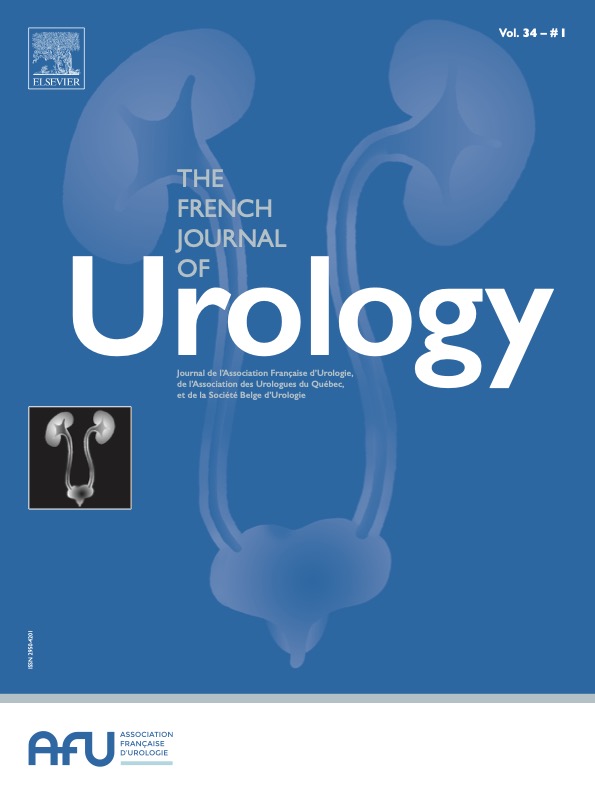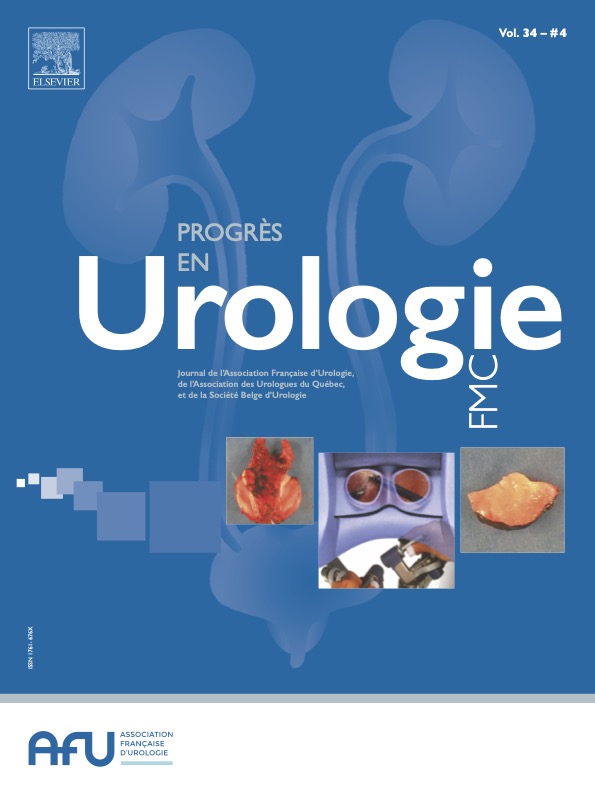|
| Food and Drug Administration, FDA Safety Communication UPDATE on Serious Complications Associated with Transvaginal Placement of Surgical Mesh for Pelvic Organ Prolapse, FDA, Silver Spring, Md, États-Unis ucm262435.htm2011 | | | Deffieux X., Sentilhes L., Savary D., Letouzey V., Marcelli M., Mares P., et al. Indications de la cure du prolapsus génital par voie vaginale avec prothèse : consensus d’experts du Collège national des gynécologues et obstétriciens français (CNGOF) J Gynecol Obstet Biol Reprod 2013 ; 42 : 628-638 [inter-ref] | | | Fiche méthodologique de la HAS - Rédaction de l’argumentaire scientifique ; Élaboration de recommandations de bonne pratique et des recommandations - Décembre 2010 guide_methodologique_recommandations_pour_la_pra-%20tique_clinique.pdf | | | Maher C., Feiner B., Baessler K., Schmid C. Surgical management of pelvic organ prolapse in women Cochrane Database Syst Rev 2013 ; 4 : CD004014 | | | Robert M., Girard I., Brennand E., Tang S., Birch C., Murphy M., et al. Absorbable mesh augmentation compared with no mesh for anterior prolapse: a randomized controlled trial Obstet Gynecol 2014 ; 123 : 288-294 [cross-ref] | | | Delroy C.A., Castro Rde A., Dias M.M., Feldner P.C., Bortolini M.A., Girào M.J., et al. The use of transvaginal synthetic mesh for anterior vaginal wall prolapse repair: a randomized controlled trial Int Urogynecol J 2013 ; 24 : 1899-1907 [cross-ref] | | | Altman D., Vayrynen T., Engh M.E., Axelsen S., Falconer C. Anterior colporrhaphy versus transvaginal mesh for pelvic-organ prolapse N Engl J Med 2011 ; 364 : 1826-1836 [cross-ref] | | | de Tayrac R., Cornille A., Eglin G., Guilbaud O., Mansoor A., Alonso S., et al. Comparison between trans-obturator transvaginal mesh and traditional anterior colporrhaphy in the treatment of anterior vaginal wall prolapse : results of a French RCT Int Urogynecol J 2013 ; 24 : 1651-1661 [cross-ref] | | | Nguyen J.N., Burchette R.J. Outcome after anterior vaginal prolapse repair: a randomized controlled trial Obstet Gynecol 2008 ; 111 : 891-898 [cross-ref] | | | Nieminen K., Hiltunen R., Takala T., Heiskanen E., Merikari M., Niemi K., et al. Outcomes after anterior vaginal wall repair with mesh: a randomized, controlled trial with a 3 year follow-up Am J Obstet Gynecol 2010 ; 203 (235) : e1-e8 | | | Sivaslioglu A.A., Unlubilgin E., Dolen I. A randomized comparison of polypropylene mesh surgery with site-specific surgery in the treatment of cystocoele Int Urogynecol J Pelvic Floor Dysfunct 2008 ; 19 : 467-471 [cross-ref] | | | Sokol A.I., Iglesia C.B., Kudish B.I., Gutman R.E., Shveiky D., Bercik R., et al. One-year objective and functional outcomes of a randomized clinical trial of vaginal mesh for prolapse Am J Obstet Gynecol 2012 ; 206 (86) : e1-e9 | | | Vollebregt A., Fischer K., Gietelink D., van der Vaart C.H. Primary surgical repair of anterior vaginal prolapse: a randomised trial comparing anatomical and functional outcome between anterior colporrhaphy and trocar-guided transobturator anterior mesh BJOG 2011 ; 118 : 1518-1527 [cross-ref] | | | Dos Reis Brandao da Silveira S., Haddad J.M., de Jarmy-Di Bella Z.I., Nastri F., Kawabata M.G., da Silva Carramào S., et al. Multicenter, randomized trial comparing native vaginal tissue repair and synthetic mesh repair for genital prolapse surgical treatment Int Urogynecol J 2015 ; 26 : 335-342 [cross-ref] | | | Lamblin G., Van-Nieuwenhuyse A., Chabert P., Lebail-Carval K., Moret S., Mellier G. A randomized controlled trial comparing anatomical and functional outcome between vaginal colposuspension and transvaginal mesh Int Urogynecol J 2014 ; 25 : 961-970 [cross-ref] | | | Iglesia C.B., Sokol A.I., Sokol E.R., Kudish B.I., Gutman R.E., Peterson J.L., et al. Vaginal mesh for prolapse: a randomized controlled trial Obstet Gynecol 2010 ; 116 : 293-303 [cross-ref] | | | Tamanini J.T., de Oliveira Souza Castro R.C., Tamanini J.M., Castro R.A., Sartori M.G., Girào M.J. A prospective, randomized, controlled trial of the treatment of anterior vaginal wall prolapse: medium term followup J Urol 2015 ; 193 : 1298-1304 [cross-ref] | | | Carey M., Higgs P., Goh J., Lim J., Leong A., Krause H., et al. Vaginal repair with mesh versus colporrhaphy for prolapse: a randomised controlled trial BJOG 2009 ; 116 : 1380-1386 [cross-ref] | | | Gutman R.E., Nosti P.A., Sokol A.I., Sokol E.R., Peterson J.L., Wang H., et al. Three-year outcomes of vaginal mesh for prolapse: a randomized controlled trial Obstet Gynecol 2013 ; 122 : 770-777 [cross-ref] | | | Menefee S.A., Dyer K.Y., Lukacz E.S., Simsiman A.J., Luber K.M., Nguyen J.N. Colporrhaphy compared with mesh or graft-reinforced vaginal paravaginal repair for anterior vaginal wall prolapse: a randomized controlled trial Obstet Gynecol 2011 ; 118 : 1337-1344 [cross-ref] | | | Halaska M., Maxova K., Sottner O., Svabik K., Mlcoch M., Kolarik D., et al. A multicenter, randomized, prospective, controlled study comparing sacrospinous fixation and transvaginal mesh in the treatment of posthysterectomy vaginal vault prolapse Am J Obstet Gynecol 2012 ; 207 (301) : e1-e7 | | | Lopes E.D., Lemos N.L., Carramao Sda S., Lunardelli J.L., Ruano J.M.C., Aoki T., et al. Transvaginal polypropylene mesh versus sacrospinous ligament fixation for the treatment of uterine prolapse: 1-year follow-up of a randomized controlled trial Int Urogynecol J 2010 ; 21 : 389-394 [cross-ref] | | | Hiltunen R., Nieminen K., Takala T., Heiskanen E., Merikari M., Niemi K., et al. Low-weight polypropylene mesh for anterior vaginal wall prolapse: a randomized controlled trial Obstet Gynecol 2007 ; 110 : 455-462 [cross-ref] | | | Yalcin I., Bump R.C. Validation of two global impression questionnaires for incontinence Am J Obstet Gynecol 2003 ; 189 : 98-101 [inter-ref] | | | Ware J.E.J., Gandek B. Overview of the SF-36 Health Survey and the International Quality of Life Assessment (IQOLA) Project J Clin Epidemiol 1998 ; 51 : 903-912 [cross-ref] | | | Barber M.D., Walters M.D., Cundiff G.W. Responsiveness of the Pelvic Floor Distress Inventory (PFDI) and Pelvic Floor Impact Questionnaire (PFIQ) in women undergoing vaginal surgery and pessary treatment for pelvic organ prolapse Am J Obstet Gynecol 2006 ; 194 : 1492-1498 [inter-ref] | | | Barber M.D., Walters M.D., Bump R.C. Short forms of two condition-specific quality-of-life questionnaires for women with pelvic floor disorders (PFDI-20 and PFIQ-7) Am J Obstet Gynecol 2005 ; 193 : 103-113 [inter-ref] | | | Rogers R.G., Kammerer-Doak D., Villarreal A., Coates K., Qualls C. A new instrument to measure sexual function in women with urinary incontinence or pelvic organ prolapse Am J Obstet Gynecol 2001 ; 184 : 552-558 [inter-ref] | | | Vollebregt A., Fischer K., Gietelink D., van der Vaart C.H. Effects of vaginal prolapse surgery on sexuality in women and men; results from a RCT on repair with and without mesh J Sex Med 2012 ; 9 : 1200-1211 [cross-ref] | | | Maher C.F., Feiner B., DeCuyper E.M., Nichlos C.J., Hickey K.V., O’Rourke P. Laparoscopic sacral colpopexy versus total vaginal mesh for vaginal vault prolapse: a randomized trial Am J Obstet Gynecol 2011 ; 204 (360) : e1-e7 | | | Jacquetin B., Hinoul P., Gauld J., Fatton B., Rosenthal C., Clavé H., et al. Total transvaginal mesh (TVM) technique for treatment of pelvic organ prolapse: a 5-year prospective follow-up study Int Urogynecol J 2013 ; 24 : 1679-1686 [cross-ref] | | | Withagen M.I., Milani A.L., den Boon J., Vervest H.A., Vierhout M.E. Trocar-guided mesh compared with conventional vaginal repair in recurrent prolapse: a randomized controlled trial Obstet Gynecol 2011 ; 117 : 242-250 [cross-ref] | | | Ellington D.R., Richter H.E. The role of vaginal mesh procedures in pelvic organ prolapse surgery in view of complication risk Obstet Gynecol Int 2013 ; 2013 : 1-7 [cross-ref] | | | Araco F., Gravante G., Sorge R., Overton J., De Vita D., Primicerio M., et al. The influence of BMI, smoking, and age on vaginal erosions after synthetic mesh repair of pelvic organ prolapses. A multicenter study Acta Obstet Gynecol Scand 2009 ; 88 : 772-780 [cross-ref] | | | Kaufman Y., Singh S.S., Alturki H., Lam A. Age and sexual activity are risk factors for mesh exposure following transvaginal mesh repair Int Urogynecol J 2011 ; 22 : 307-313 [cross-ref] | | | Letouzey V., Deffieux X., Gervaise A., Mercier G., Fernandez H., de Tayrac R. Trans-vaginal cystocele repair using a tension-free polypropylene mesh: more than 5 years of follow-up Eur J Obstet Gynecol Reprod Biol 2010 ; 151 : 101-105 [cross-ref] | | | Guillibert F., Chene G., Fanget C., Huss M., Seffert P., Chauleur C. Facteurs de risque d’exposition de prothèse dans les cures de prolapsus génital par voie vaginale Gynecol Obstet Fertil 2009 ; 37 : 470-475 [inter-ref] | | | Jacquetin B., Fatton B., Rosenthal C., Clavé H., Debodinance P., Hinoul P., et al. Total transvaginal mesh (TVM) technique for treatment of pelvic organ prolapse: a 3-year prospective follow-up study Int Urogynecol J 2010 ; 21 : 1455-1462 [cross-ref] | | | Popovic I., Debodinance P., Cosson M., Boukerrou M. Prosthetic reinforcements: how to manage bladder injuries? Int Urogynecol J Pelvic Floor Dysfunct 2007 ; 18 : 1215-1217 [cross-ref] | | | Finamore P.S., Echols K.T., Hunter K., Goldstein H.B., Holzberg A.S., Vakili B. Risk factors for mesh erosion 3 months following vaginal reconstructive surgery using commercial kits vs. fashioned mesh-augmented vaginal repairs Int Urogynecol J 2010 ; 21 : 285-291 [cross-ref] | | | Ganj F.A., Ibeanu O.A., Bedestani A., Nolan T.E., Chesson R.R. Complications of transvaginal monofilament polypropylene mesh in pelv’c organ prolapse repair Int Urogynecol J Pelvic Floor Dysfunct 2009 ; 20 : 919-925 [cross-ref] | | | Belot F., Collinet P., Debodinance P., Ha Duc E., Lucot J.P., Cosson M. Risk factors for prosthesis exposure in treatment of genital prolapse via the vaginal approach Gynecol Obstet Fertil 2005 ; 33 : 970-974 [inter-ref] | | | Collinet P., Belot F., Debodinance P., Ha Duc E., Lucot J.P., Cosson M. Transvaginal mesh technique for pelvic organ prolapse repair: mesh exposure management and risk factors Int Urogynecol J Pelvic Floor Dysfunct 2006 ; 17 : 315-320 [cross-ref] | | | de Tayrac R., Sentilhes L. Complications of pelvic organ prolapse surgery and methods of prevention Int Urogynecol J 2013 ; 24 : 1859-1872 [cross-ref] | | | Rigaud J., Delavierre D., Sibert L., Labat J.J. Prise en charge des douleurs pelvipérinéales chroniques après pose de bandelette sous-urétrale pour incontinence urinaire Prog Urol 2010 ; 20 : 1166-1174 [inter-ref] | | | Clave A., Yahi H., Hammou J.C., Montanari S., Gounon P., Clave H. Polypropylene as a reinforcement in pelvic surgery is not inert: comparative analysis of 100 explants Int Urogynecol J 2010 ; 21 : 261-270 [cross-ref] | | | Mage P. L’interposition d’un treillis synthétique dans la cure par voie vaginale des prolapsus génitaux J Gynecol Obstet Biol Reprod 1999 ; 28 : 825-829 [inter-ref] | | | Sergent F., Marpeau L. Renforcement prothétique du diaphragme pelvien dans la chirurgie des prolapsus génito-urinaires : technique du hamac transobturateur infracoccygien J Gynecol Obstet Biol Reprod 2003 ; 32 : 120-126 | | | Lechaux J.P., Lechaux D., Bataille P., Bars I. Traitement de la rectocèle par voie périnéale avec prothèse. Une étude prospective Ann Chir 2004 ; 129 : 211-217 [inter-ref] | | | Cervigni M., Natale F., La Penna C., Saltari M., Padoa A., Agostini M. Collagen-coated polypropylene mesh in vaginal prolapse surgery: an observational study Eur J Obstet Gynecol Reprod Biol 2011 ; 156 : 223-227 [cross-ref] | | | Moore R.D., Lukban J.C. Comparison of vaginal mesh extrusion rates between a lightweight type I polypropylene mesh versus heaver mesh in the treatment of pelvc organ prolapse Int Urogynecol J 2012 ; 23 : 1379-1386 [cross-ref] | | | Weemhoff M., Vergeldt T.F., Notten K., Serroyen J., Kampschoer P.H., Roumen F.J. Avulsion of puborectalis muscle and other risk factors for cystocele recurrence: a 2-year follow-up study Int Urogynecol J 2012 ; 23 : 65-71 [cross-ref] | | | Vakili B., Zheng Y.T., Loesch H., Echols K.T., Franco N., Chesson R.R. Levator contraction strength and genital hiatus as risk factors for recurrent pelvic organ prolapse Am J Obstet Gynecol 2005 ; 192 : 1592-1598 [inter-ref] | | | Dietz H.P., Chantarasorn V., Shek K.L. Levator avulsion is a risk factor for cystocele recurrence Ultrasound Obstet Gynecol 2010 ; 36 : 76-80 [cross-ref] | | | Wong V., Shek K., Rane A., Goh J., Krause H., Dietz H.P. Is levator avulsion a predictor of cystocele recurrence following anterior vaginal mesh placement? Ultrasound Obstet Gynecol 2013 ; 42 : 230-234 [cross-ref] | | | Salvatore S., Athanasiou S., Digesu G.A., Soligo M., Sotiropoulou M., Serati M., et al. Identification of risk factors for genital prolapse recurrence Neurourol Urodyn 2009 ; 28 : 301-304 [cross-ref] | | | Medina C.A., Candiotti K., Takacs P. Wide genital hiatus is a risk factor for recurrence following anterior vaginal repair Int J Gynaecol Obstet 2008 ; 101 : 184-187 [cross-ref] | | | Pierce C.B., Hallock J.L., Blomquist J.L., Handa V.L. Longitudinal changes in pelvc organ support among parous women Female Pelvic Med Reconstr Surg 2012 ; 18 : 227-232 [cross-ref] | | | Ek M., Altman D., Gunnarsson J., Falconer C., Tegerstedt G. Clinical efficacy of a trocar-guided mesh kit for repairing lateral defects Int Urogynecol J 2013 ; 24 : 249-254 [cross-ref] | | | Thubert T., Deffieux X., Letouzey V., Hermieu J.F. Obésité et urogynécologie : revue de la littérature Prog Urol 2012 ; 22 : 445-453 [inter-ref] | | | Chen M.L., Collins S.A., Rodgers A.K., Paraiso M.F., Walters M.D., Barber M.D. Perioperative complications in obese women vs normal-weight women who undergo vaginal surgery Am J Obstet Gynecol 2007 ; 197 (98) : e1-e8 [cross-ref] | |
|








